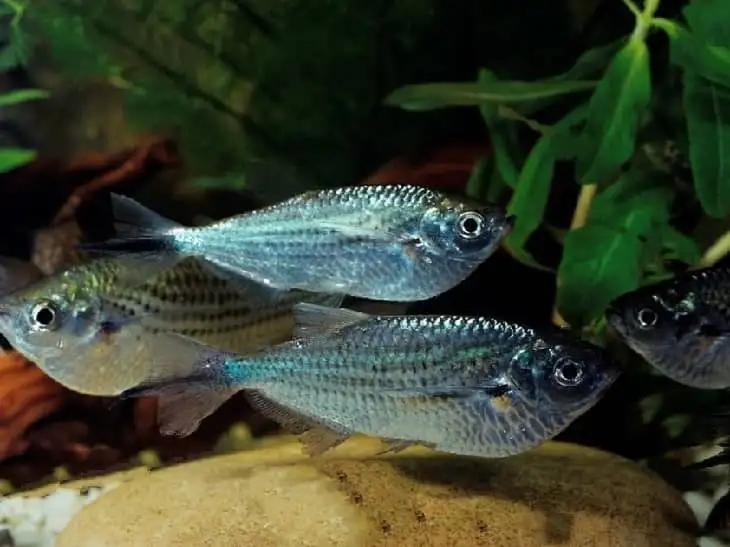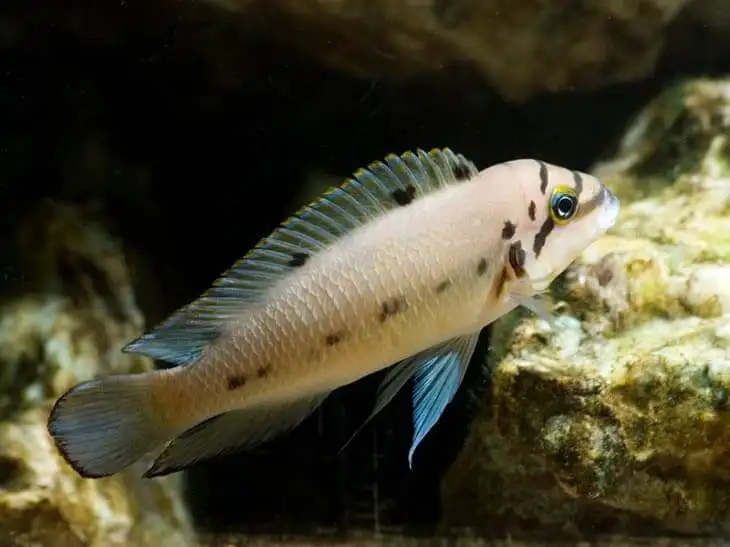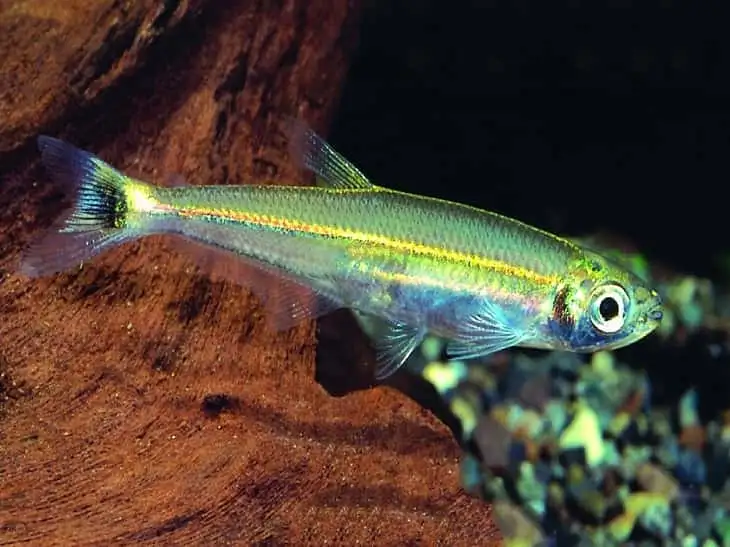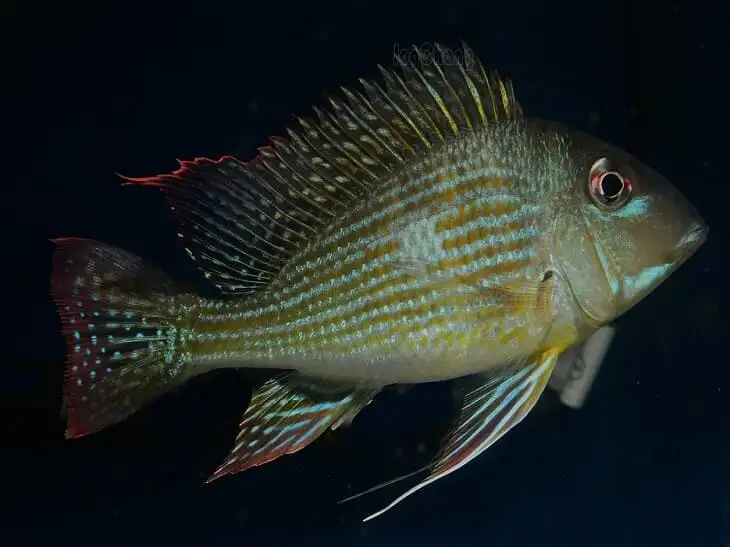Triportheus angulatus

The freshwater fish Triportheus angulatus, often referred to as the dusky axe fish or freshwater sardine for its external resemblance. These fish can be found in shallow waters in many rivers in Ecuador, Venezuela, Peru, Brazil, Bolivia and Argentina.
Triportheus angulatus has a keel-like body shape. The belly is silvery and the back is grey. The entire body of the fish is covered with fine black mottles, which are arranged in horizontal stripes. The pectoral fins, which are very similar to wings, look very interesting. Sex differences are absent. The sex of the fish can only be determined during the spawning period. The maximum size of the fish is 16.5 cm.
The Triportheus angulatus is a peaceful fish. However, due to their irrepressible character, the triporteus can become a big problem for calm, smaller fish. The dotted tryporteus can become good neighbours for geophagus and satanopeer, as well as other peace-loving fish of comparable size. Keep Tryporteus preferably in a group of at least 6-8 fish. The whole flock lives in peace, without establishing hierarchy in it.
The fish can be kept in an aquarium of 150 liters. The surface area of the aquarium is more important than the depth, because the fish naturally spend almost all their time at the water surface. Several bushes of floating plants can be placed on the water surface. The fish will then become less fearful. Make sure the aquarium is covered, as the fish can jump out of the water with remarkable ease.
Water parameters: temperature 22-30° C, hardness dH 0-20°, pH 5.0-7.5. Need filtration and strong aeration of water, as well as its weekly replacement of 1/3 of fresh water.
There are no recommendations for substrate and it can be anything. The lighting should be of medium intensity.
Triportheus angulatus are omnivorous by nature. They eat insects and plant seeds in nature. Under aquarium conditions the fish eat most live, frozen and dried food. Keep in mind that the fish only take food from the water surface, all food that sinks to the bottom will be neglected. The fish are fed twice a day.
Reproduction
In the aquarium, Triportheus angulatus does not breed, at least data on their successful breeding in captivity, we have not. All fish that occasionally appear on the domestic zoo market, supplied from their natural habitat.






